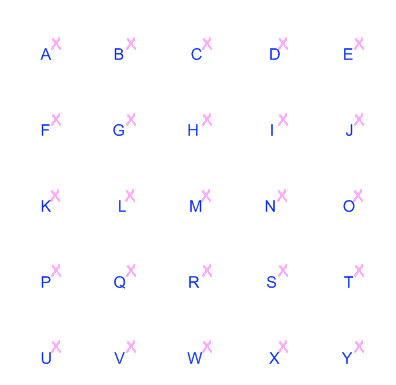Or search by topic
Number and algebra
Geometry and measure
Probability and statistics
Working mathematically
Advanced mathematics
For younger learners
How Steep Is the Slope?



- Problem
- Getting Started
- Student Solutions
- Teachers' Resources
Why do this problem?
This problem offers an introduction to gradients within a simple environment that allows students to explore all the important aspects of gradient. This is a suitable preparation for students to move on to:
- Straight line graphs (for example Parallel Lines)
- Gradients of perpendicular lines (for example At Right Angles)
- Exploration of Pythagoras' Theorem (for example Tilted Squares)
Possible approach
These printable resources may be useful: How steep is the slope,
Grid Worksheet.
Share with the class the definition of gradient given at the start of the problem. Resist the temptation to give a 'rule' for working out gradients, as methods should emerge in the discussions that follow.

Use these questions as an opportunity to share different strategies for working out the gradients.
Hand out copies of this sheet and ask students to work in pairs on the main problem:
"How many different gradients can you find? Can you find them all?"
"Arrange them in order of steepness and list the points each line passes through."
Expect students to work systematically so that they are in a good position to justify their findings.
Circulate while students are discussing the problem, and towards the end of the session invite pairs with interesting approaches to share their conclusions with the rest of the group.
Abigail Mantaj from Diocesan School for Girls in Auckland, New Zealand, was inspired by the original problem to create this task for her students.
Key questions
What does it mean for a line to have positive or negative gradient?
A standard method for working out gradients is to divide the vertical displacement by the horizontal displacement. What is the connection between this algorithm and the definition of gradient given at the start of the problem?
Possible support
Students who are struggling to work systematically could be given the prompt, explained in the Hint, to fix one end of their ruler at an extreme point on the grid, and slowly move the other end to create lines with different gradients.
Possible extension
Students could move on to At Right Angles to consider the gradients of perpendicular lines, or on to Parallel Lines and Perpendicular Lines to investigate the
relationship between the equations of parallel and perpendicular lines on a co-ordinate grid.
Related Collections
You may also like
Lying and Cheating
Follow the instructions and you can take a rectangle, cut it into 4 pieces, discard two small triangles, put together the remaining two pieces and end up with a rectangle the same size. Try it!
How Far Does it Move?
Experiment with the interactivity of "rolling" regular polygons, and explore how the different positions of the red dot affects the distance it travels at each stage.
Up and Across
Experiment with the interactivity of "rolling" regular polygons, and explore how the different positions of the dot affects its vertical and horizontal movement at each stage.

